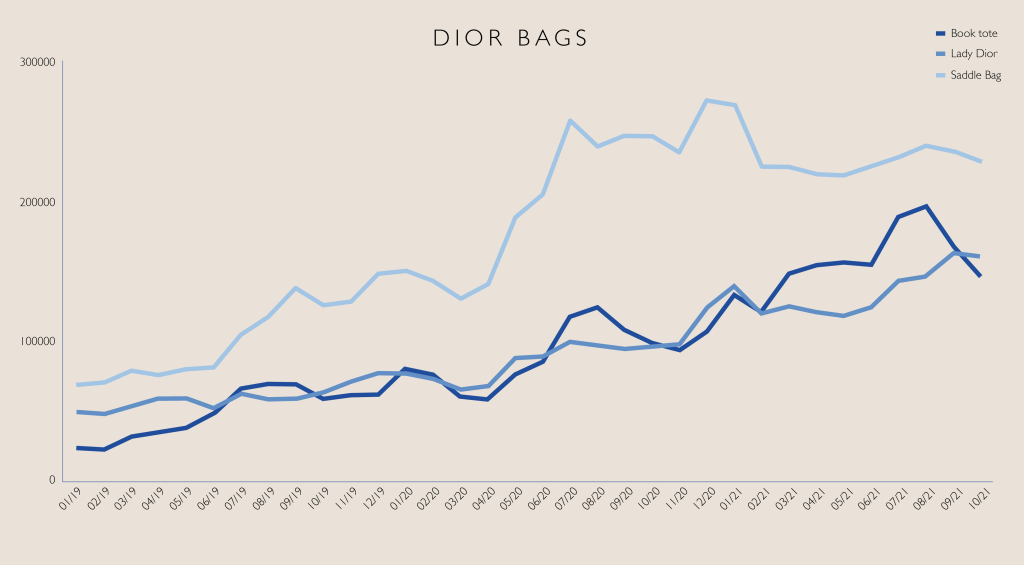How Searches For Luxury’s Iconic Products Grew During The Pandemic
When most people think of Hermès, their first association is to think of one of its most famous bags, The Birkin. The tote is one of their most iconic products and one that is synonymous with the brand’s qualities of timelessness and craftsmanship. It is also so highly sought after, that the brand no longer has waiting lists for it. The demand is just too great. Which makes The Birkin, the ultimate iconic product.
Each brand has its own. Hermès in fact has multiple iconic products. As does Cartier, Chanel, Dior, or Louis Vuitton. It’s something that can take years to establish, but once done, can be the very thing that puts your brand on the map for years to come. Particularly during times of crisis.
The past two years have shown us that interest in iconic products is at an all-time high, with Google searches for “Cartier Love Bracelet” up by 27 percent (3,404,000 searches in 2021) or by 20 percent for “Louis Vuitton Neverfull” iconic bag (1,655,000 searches for this query in 2021).
Looking at 13 leading luxury fashion, leather goods, watches, and jewellery brands, we collected and analysed the volume of Google searches (in English) for their respective icons over the past two years to see what data could tell us about consumer demand for luxury goods and what we can learn from it.
What we found was that search demand for iconic products grew in all markets. For example, search demand for the Fendi Peekaboo bag, which was launched in 2009, recorded a 50 percent growth increase in the number of search queries worldwide to 989,500 in 2021 and compared to the past two years. Prada leveraged its Galleria bag with an increase of 76 percent in 2021 compared to 2019, for a total of 220,830 queries related to the iconic bag which launched more recently in 2017.
Looking more closely at the data in the eight selected markets in our analysis, Dior recorded the highest evolution of search demand for its iconic products followed by Hermès, Tiffany’s, and Cartier.
Another interesting point to note for luxury brands is that those that continued to evolve their product offering, and establish new iconic products to complement their existing offering have benefited greatly, as seen with Dior. The French fashion house recently launched two new bags, the Dior Bobby and the Dior Caro, both of which have seen an increase in Google search demand, demonstrating that there is still room for the creation of new iconic products on top of a brand’s existing offering.
The number of search queries for ‘Dior Bobby’, ‘Dior Bobby bag’ on Google increased by 10 percent in the last six months, raising this total to around 8’800 queries in October 2021.
From our findings, we believe that there are still huge opportunities for brands to launch, create and develop iconic products. While it is true that customers tend to favour what they know and trust, storytelling, digital activations, timeless design, and 360° synergies are key to an iconic product’s development.
Looking forward, how brands embrace and embed omnichannel and immersive experiences into the customer journey is essential to establishing the relationship with their consumers and how they perceive their products.
Being innovative in terms of digitalisation or sustainability are actual major elements and part of the quick wins, that along with celebrating a brand’s past with iconic products that allow brands to perpetuate their history and know-how, and increase its desirability are part and parcel of being a luxury brand today.
For the full article on Luxury Society, please click here.



